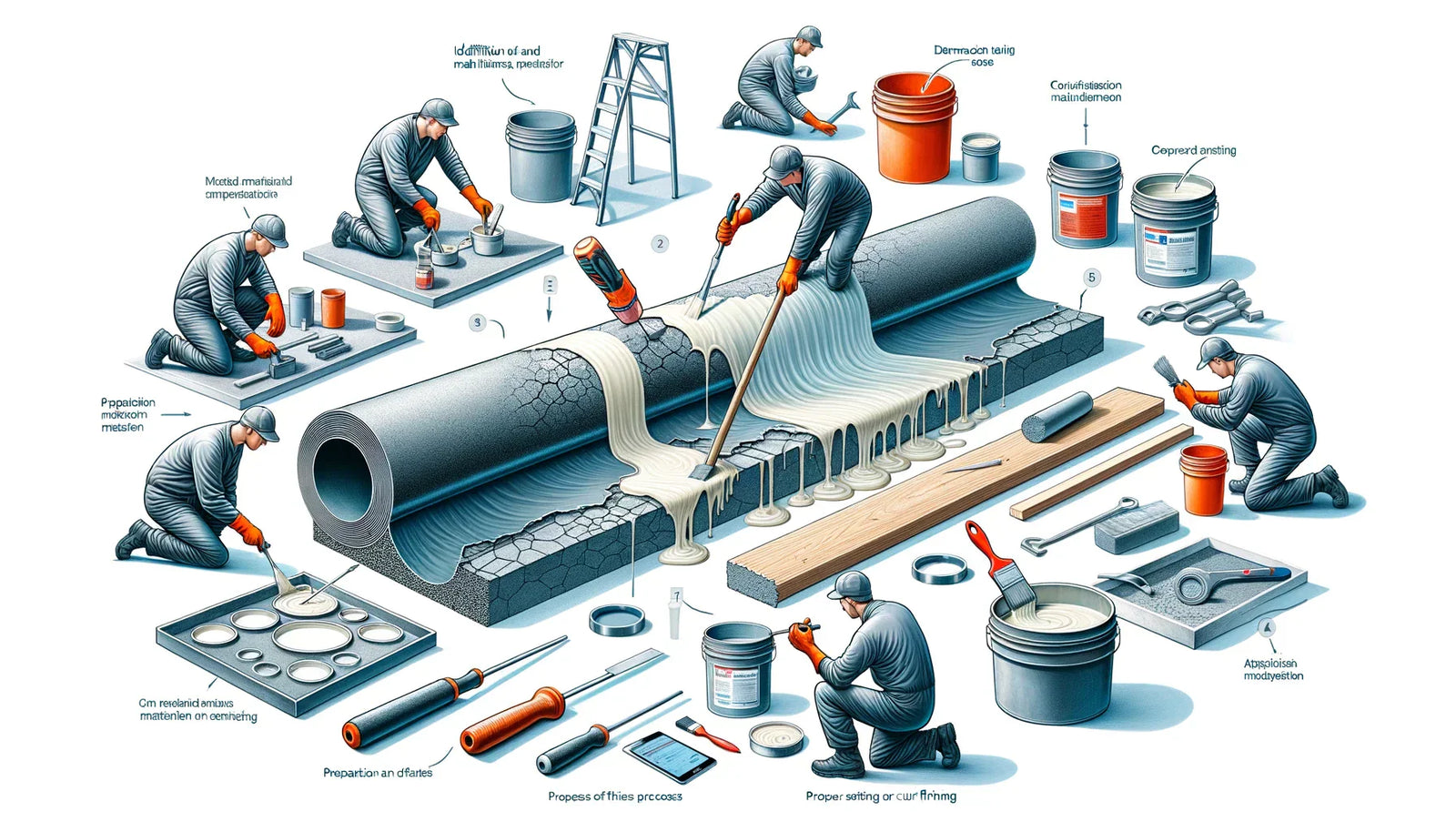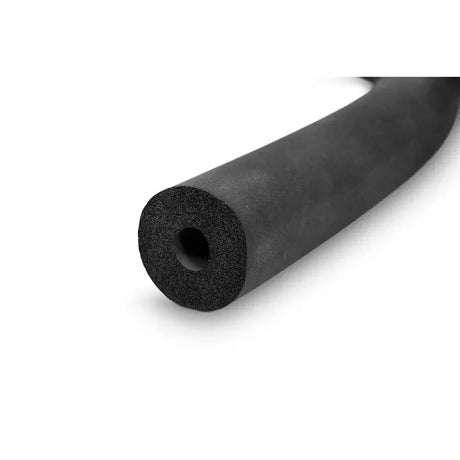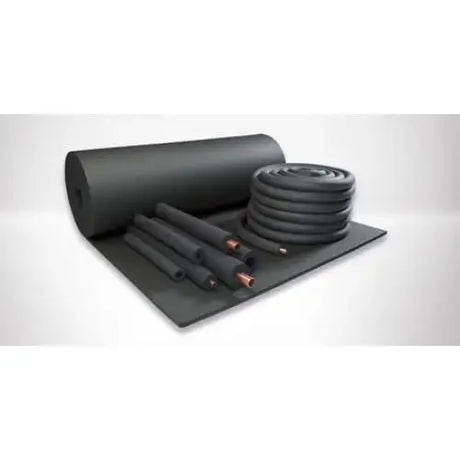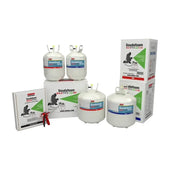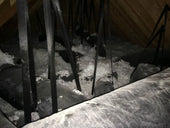Ever noticed the flexible, sealant material used around your bath or as a lining around window frames? That's mastic for you. It's a crucial, yet often overlooked element in the construction and maintenance of buildings. The upkeep of mastics can mean the difference between a water-tight window or a bath that's ready to spring a leak. In this article, we'll take a deep dive into the world of mastics, exploring their types, signs of damage, and how to repair and maintain them to ensure longevity and efficiency.
Understanding Mastics
What Exactly Are Mastics?
Mastics are a bit like the unsung heroes of building materials. They're adhesive, pliable, and are used to seal and bind surfaces together. Picture a chameleon; mastics change their properties depending on what's needed – they can be rigid or flexible, permanent or temporary.
A Variety of Mastics for Different Uses
- Silicone Mastics: The all-rounders, great for damp areas like kitchens and bathrooms.
- Polyurethane Mastics: Tough cookies, these are used where you need a strong, durable bond, like in flooring.
- Acrylic Mastics: The decorators' choice, they're paintable and perfect for sealing gaps in woodwork or drywall.
Common Applications of Mastics
Mastics are used in a myriad of ways. They seal windows, insulate pipes, and even keep your shower watertight. Without them, buildings would be drafty, damp, and much less durable.
Signs of Mastic Damage
Keep Your Eyes Peeled for Cracks and Gaps
It's a bit like playing detective with your house. Look out for any signs of cracks or gaps where mastics should be doing their job. If you spot them, it's time to get your tool belt on.
Discolouration or Degradation: A Tell-tale Sign
Mastics can change colour or start to break down over time, especially if they're exposed to UV light or harsh weather. If your sealant's gone from bright white to a dingy yellow, it might be crying out for help.
The Importance of Early Detection
Catching problems early can save you a bucket-load of trouble later. If your mastic is showing its age, taking action now could prevent water damage or bigger gaps forming.
Tools and Materials
Basic Tools for the Job
- Caulking Gun: This isn't a weapon; it's your best friend when applying new mastic.
- Putty Knife: Ideal for removing old mastic and tidying up the new stuff.
Choosing the Right Materials
You wouldn't use a sledgehammer to crack a nut, right? So, choosing the right mastic is key. Silicone sealant is a good go-to for most jobs, but if you're dealing with high temperatures or need something paintable, you might opt for a specialised mastic.
Preparation for Repair
Clean as a Whistle
Before you start, make sure the area's clean. Any grease or old sealant can stop the new mastic from sticking properly.
Out with the Old
Removing the damaged mastic can be a sticky affair, but it's essential. You're aiming for a smooth surface to give the new mastic the best start in life.
A Solid Foundation
If your mastic can't stick, it's not going to do its job. Make sure the surface is dry and dust-free. Think of it as preparing a canvas before painting a masterpiece.
Repairing Small Cracks
The Right Sealant for the Job
Just a tiny crack, you say? Don't worry, a bit of the right sealant and it'll be as good as new.
Applying with Finesse
It's not just a case of squirting it in and hoping for the best. Applying sealant neatly ensures a water-tight seal and a finish that's easy on the eye.
Smooth Moves
After application, smooth the sealant with a damp finger or tool. This isn't just to make it look pretty; it also makes sure the mastic forms a good seal.
Addressing Larger Gaps
Filling the Void
For gaps you could lose a coin in, you'll need a backing rod or mastic tape to fill most of the space before you seal it.
Sealing the Deal
Once the backing is in place, apply your sealant over the top, ensuring it fills the gap and locks out any potential water ingress.
Double-Check the Adhesion
It's vital to ensure the mastic has bonded well with the surface. A gap might look filled, but if the sealant hasn't stuck, it's as useful as a chocolate teapot.
Maintaining Mastics
An Ounce of Prevention
Regular maintenance can save you time and money. A quick check now and then could prevent the need for a full repair down the line.
Keeping It Clean
Mastics can collect dirt and mould, which can lead to degradation. A clean seal is a happy seal.
Sealant Top-ups
Sometimes, all your mastic needs is a little top-up. Think of it like giving your car a quick oil check – it keeps everything running smoothly.
In the next section, we'll continue to explore how to weatherproof and insulate with mastics, delve into safety considerations, and when it might be time to call in the pros. Stay tuned!
Weatherproofing and Insulation
Battling the Elements
A mastic's role in weatherproofing can't be overstated – it's like a raincoat for your building's vulnerable spots. By sealing cracks and gaps, you're keeping the great British weather where it belongs – outside.
Insulation: More Than Just Warmth
Mastics also play a part in keeping your energy bills down by insulating your home. It's like wrapping your house in a snug blanket, keeping the warmth in and the cold out.
The Benefits of a Well-Sealed Building
Mastic maintenance might seem like a chore, but it's a critical factor in weatherproofing and insulation. It can prevent moisture damage and save on heating costs, making it a win-win situation.
Safety Considerations
Safety First
When working with mastics, safety should be your number one priority. Always read the label, and don't cut corners – it's better to be safe than sorry.
Ventilation and Gear
Proper ventilation is crucial, especially if you're working with strong-smelling mastics. Don your gloves and goggles, too – you might feel like a mad scientist, but your eyes and skin will thank you.
The Right Way to Handle Mastics
Disposal of mastic materials should be done responsibly. Don't just chuck them in the bin – they might contain chemicals that need special treatment. It's like disposing of batteries; you wouldn't just throw them away, would you?
Professional Assistance
When to Wave the White Flag
Sometimes, a repair job is beyond the scope of a DIY enthusiast. If you're dealing with a skyscraper or a historic building, for instance, it might be time to call in the cavalry.
The Pros Know Best
Professional mastic repair services come with experience and expertise. They can spot issues that might escape the untrained eye and can ensure a repair that's as solid as a rock.
Finding Trusted Tradespeople
If you decide to go down the professional route, do your homework. Look for reputable services with good reviews – a bit like finding a good mechanic, you want someone you can trust with your baby.
Cost Considerations
The Price of Prevention
The cost of mastic repair can vary widely. It's like comparing the price of a quick fix for a dripping tap to a full plumbing overhaul – it all depends on the extent of the damage.
DIY vs. Professional: The Budgeting Battle
Tackling mastic repairs yourself can be cheaper, but only if you know what you're doing. Sometimes, paying for a professional can be the more economical choice in the long run.
The Long-Term View
Maintaining your mastics can seem like an expense, but think of it as an investment. By preventing more severe damage, you're saving money down the line – like buying quality shoes that will last for years.
Environmental Impact
Green Mastics?
Eco-friendly mastic options are out there. They're like the organic produce of the building world – better for the planet, and sometimes, even for your health.
Disposing with Care
Just like recycling your plastics, properly disposing of mastic materials is a small step with a big impact on the environment.
Sustainable Practices
Supporting sustainable mastic maintenance is a bit like choosing a reusable coffee cup over a disposable one – every little bit helps in reducing our environmental footprint.
Conclusion
The Takeaway
Maintaining mastics may not be glamorous, but it's essential. Like brushing your teeth to prevent cavities, regular mastic maintenance prevents bigger problems.
Be Proactive
Don't wait for a rainy day to find out your mastics need attention. A little bit of regular care can go a long way.
Final Tips for Mastic Mastery
Keep an eye on your mastic, clean and maintain it regularly, and don't be afraid to call in the professionals if needed. It's like keeping an eye on the health of your home – a stitch in time saves nine.
In the end, whether you're a DIY daredevil or prefer to leave it to the pros, understanding and maintaining the mastics in your home or building will ensure a safer, more comfortable environment. So next time you see a tube of sealant, give a little nod to this unsung hero of home maintenance.

